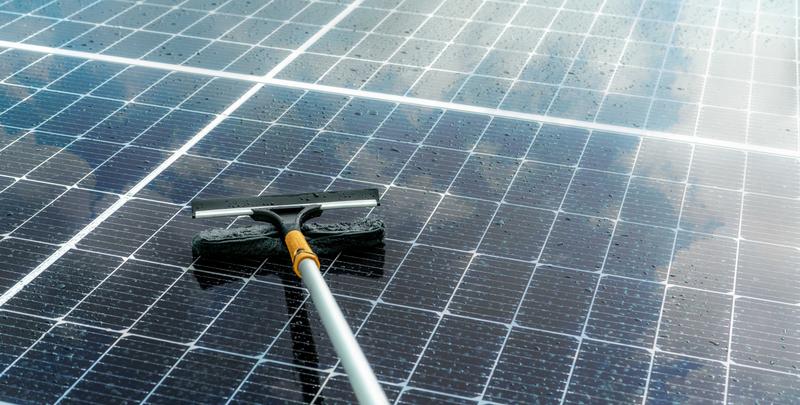
If you’re attempting to find a higher-general performance Solar Panel Cleaning brush, Skilled-grade
Why Solar Panel Cleaning Matters
Solar panels seize Strength at their ideal when thoroughly clean. Dust, pollen, chicken droppings, and smog reduce performance—sometimes by twenty% or even more. Normal cleansing will help preserve optimal general performance, increase panel everyday living, and defend your investment decision.
Main Gains:
- Improved Electrical power output
- Decrease electricity expenses
- Prolonged panel lifespan
- Decreased hazard of micro‑cracks on account of thermal hotspots
Types of Solar Cleansing Resources
Selecting the appropriate tool is dependent upon your set up, water availability, and sought after convenience. Classes involve:
- H2o‑powered solar brush devices
- Moveable photo voltaic panel cleaning kit bundles
- Pure drinking water cleaning units
- Rotary solar brushes and extension poles
Drinking water Driven Photo voltaic Brush Units
These brushes connect to a water supply and spin although dispensing water, combining cleaning and lubrication in one phase. The end result: spotless panels without the need of scratching.
Key Functions:
- Integrated drinking water feed throughout the brush head
- Gentle bristles Protected for glass surfaces
- Rotary motion lowers guide exertion
- Mounts on extension poles for rooftop entry
Transportable Solar Panel Cleaning Package
A whole
- Brush head (mounted or rotating)
- Extension pole (adjustable lengths approximately six m)
- Hose adapters or swift‑link fittings
- Pure‑water tank or filtration program
- Tender microfiber towels or squeegees
- Non‑abrasive cleansing Answer (if authorized)
Great things about All-in-A single Kits:
- Start cleansing with nominal set up
- Compact for storage or travel
- Compatible with household or business photo voltaic arrays
Pure Drinking water Photo voltaic Cleaning Techniques
These techniques purify neighborhood water—taking away minerals and Filth—so it gained’t depart scale or streaks. Pure drinking water empowers Experienced-quality results without having chemical substances.
How It Works:
- Pretreatment filtration (sediment, carbon, ion exchange)
- Ultimate deionization or reverse‑osmosis stage
- Filtered h2o circulated by brush for cleaning
- Residue‑no cost drying—no spots or streaks remaining driving
Rotary Photo voltaic Brush & Extension Poles
For giant solar arrays or business use, an influence-rotating head on a telescoping extension pole will make cleaning successful and Protected.
Pros:
- Considerably less Actual physical work, faster coverage
- Reach roofs and ground‑mounted panels conveniently
- Adjustable shaft lengths for varying angles
- Common brief‑link methods for extras
Target Basic safety & Best Procedures
Cleaning photo voltaic panels entails heights and slippery surfaces—safety initial:
- Use non‑conductive extension poles
- Steer clear of strain washers that may crack glass
- Perform early or late in order to avoid glare and heat
- Wear grips and slip-resistant sneakers
- Notice area water‑use guidelines or constraints
Stage‑by‑Move Cleaning Schedule
- Convert off the solar inverter or make sure program is deactivated
- Rinse panels with low‑force h2o
- Use a brush (or photo voltaic brush kit) with drinking water feed
- Scrub Carefully in overlapping, linear passes
- Rinse completely with clean up drinking water
- Dry with microfiber squeegee or soft towel—only if desired
Choosing the Appropriate Photo voltaic Panel Cleansing Instrument
Consider your setup along with your drinking water obtain:
brush for cleaning solar panels
Maintenance & Care Recommendations
- Flush hose and brush right after Each individual use
- Retailer dry, cleanse, and far from UV exposure
- Exchange worn brush heads—and Examine bristle softness
- Inspect seals and connectors for leaks
- Change or clean up filters in pure‑drinking water methods routinely
Eco-Friendly Cleansing Added benefits
Accurate cleaning prolongs photo voltaic panel efficiency and reduces Electricity waste. Working with drinking water by itself—without the need of soaps or chemical compounds—aids maintain community ecology and avoids runoff pollution.
How Photo voltaic Panel Cleansing Impacts ROI
Good maintenance working with high quality brushes and kits retains technique performance topped up, lowering the payback period of time and maximizing energy yield with time.
Value Criteria & Benefit
- Drinking water‑driven solar brushes are Expense-powerful and durable
- Pure water systems demand upfront financial investment but give constant, spot‑no cost cleansing
- Rotary brush kits Improve productiveness—worthwhile for giant installations
- Do-it-yourself kits conserve labor costs; professional products and services Charge far more but release your time
Popular Employs of Solar Panel Brushes
- Household rooftops
- Commercial photo voltaic farms
- RV or mobile installations
- Photo voltaic carports
- BIPV segments (creating‑built-in photovoltaics)
Shopper Recommendations & Use Situations
“This solar panel cleaning brush made a visible distinction in just minutes—dust gone, no streaks, and our output enhanced!”
“Upgrading to a drinking water‑run solar brush saved hrs of scrubbing. Coupled with a pure water process, the panels looked fresh.”
FAQs About Photo voltaic Panel Cleaning
How often really should panels be cleaned?
Each and every six to twelve months, according to your local climate—much more generally in dusty or pollen-heavy locations.
Can rain clean solar panels?
Rain will help but doesn’t reduce dirt buildup or film layers—guide cleansing yields improved efficiency.
Can I use faucet drinking water?
Faucet drinking water may perhaps go away mineral residue. A
Can cleansing damage panels?
Provided that abrasive tools or higher-stress washers are utilised. Always use smooth bristles, lower-force, and observe producer tips.
Pro Methods for Solar Panel Proprietors
- Thoroughly clean early morning or night to stay away from thermal worry
- Watch output facts—if effectiveness drops, cleanse panels
- Hold panels angled—standing drinking water promotes algae advancement if still left also lengthy
- Rotate brush heads periodically to take care of even don
Conclusion: A Brush for Every Have to have
Irrespective of whether you’re on the lookout for a value-efficient
Check out the entire line of brushes and accessories made especially for photo voltaic cleansing at